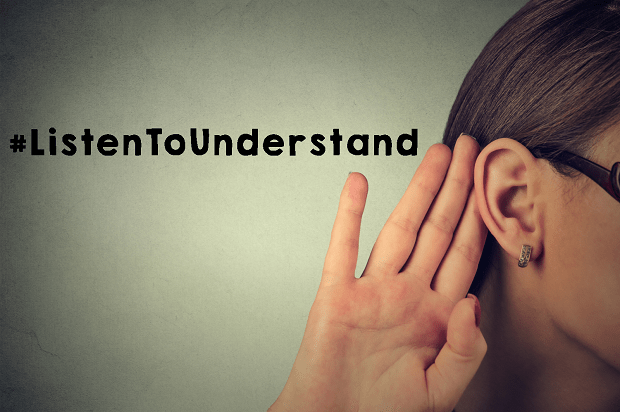
COVID-19, also known as the Coronavirus, has proven to be a tricky subject to navigate as many adjust to the abrupt need to physically distance. At the same time, we are attempting to remain socially connected with as much normalcy as possible. We shouldn’t let the Coronavirus be another taboo topic that we choose to purposefully avoid. Instead, we could take this time to learn more about those around us in order to collectively come out stronger from this pandemic than we were when it disrupted our lives.
Our CEO, Mary-Frances Winters, is known for creating the Bold, Inclusive Conversations® model to help us in discussing race, religion, and politics. I think it is safe to say we can add global pandemic to the list, as it encompasses all of these polarizing topics. As outlined in the Model for Bold Inclusive Conversations®, we need to expand our understanding of others before blindly consuming media and making assumptions. This is the perfect time to learn more about our friends, family, and colleagues’ personality types, communication styles, and cultural backgrounds, which is crucial when checking in with others and supporting them how they want to be supported.
This is the perfect time to learn more about our friends, family, and colleagues’ personality types, communication styles, and cultural backgrounds, which is crucial when checking in with others and supporting them how they want to… Share on XLiving during this pandemic has made checking-in with friends and family a number one priority for me, and I’ve had more time to do so. In a recent article in the New York Times, Sanam Yar provides conversation starters that can help reframe our conversations, and I couldn’t wait to give them a try. She starts the piece by identifying that coronavirus can’t be ignored in conversations because we can’t ignore the way it has “upended people’s lives and livelihood.” Everyone processes “negative news” differently. Some people want to vocalize their thoughts to process verbally, while others prefer to keep to themselves and process internally. Some want to keep track of the fluctuating reports of the coronavirus cases each day, while others may check a few times a week or not at all. We are all managing in the best way we know how, but the most important part of weathering this storm together is understanding that others are attempting to do just the same.
Workers have been labeled as essential or non-essential. Essential workers are unable to work from home and must continue to provide services to their communities. There is opportunity here to educate ourselves on who is working essentially and be mindful of how it may affect them when reaching out or consuming media. Huffpost has put together a general idea of what is considered essential. Some are more obvious and widely known such as healthcare providers, grocery store workers, and emergency responders. There are also a few on the list that may be overlooked like public transportation drivers, jail personnel, and both food and postal delivery drivers. Most of the workers that are considered essential are at risk every day that they go to work, and we should be considerate of their strength in doing so.
Non-essential workers have obstacles of their own. Many have transitioned to remote work, while others considered non-essential have been furloughed or laid off. Shifting to remote work will test communication in ways that force employees and leaders to trust in each other’s ability to work effectively in the new work environment. At the same time, we have to consider that being home makes access to technology and Wi-Fi a necessity. For those with families, it means balancing work and tending to children. And beyond that, we must keep in mind that people aren’t simply working from home, they’re going through a crisis while being asked to work.
We must keep in mind that people aren’t simply working from home, they’re going through a crisis while being asked to work. Share on XThe millions of workers who have been furloughed or laid off face even further difficulties. Many may be applying for unemployment insurance for the first time and are experiencing the stress associated with that process. It can be a humbling experience.
There are so many different scenarios that people may be experiencing right now that we might not be aware of them all. Therefore, it is important that when we engage in a conversation we do so with curiosity, empathy, and care.
Here are a few tips for engaging in Bold, Inclusive Conversations® amidst the Coronavirus:
- First ask about the person’s well-being. What are they feeling, and how are they handling those feelings?
- Then, find out if they need anything. They may not have access to the same things you have. They may also just need the conversation. Remember that people are handling things differently. They may want to talk about the coronavirus or may want to stay away from the topic.
- Prioritize listening and responding with empathy. Sample statements might be, “I see how that could be difficult,” and “I can’t imagine the impact on you.”
- If the coronavirus is not an ideal topic for the conversation, it is okay to take the opportunity to reframe the conversation. Discuss old or new hobbies and interests or even play a game.



















